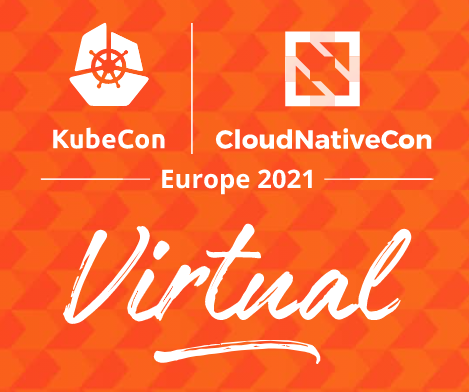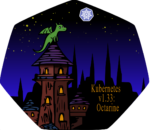
KubeCon + CloudNativeCon Europe 2021 kicked off today and a number of companies at the event made announcements of updates to their Kubernetes solutions.
Here are a few highlights from the first day of the event:
Pixie joins CNCF
Pixie is an open-source observability platform developed by New Relic. In addition to contributing Pixie, New Relic also announced it joined the CNCF Governing Board as a platinum member.
The CNCF will expand its relationship with AWS to ensure that Pixie is available on AWS.
“Open source is a defining value for New Relic and Pixie, which is why we are standardizing our observability offerings with OpenTelemetry and are in the process of contributing Pixie as an open source project to CNCF,” said Zain Asgar, GM of Pixie and New Relic Open Source at New Relic, and CEO and co-founder of Pixie Labs. “We have seen the positive impact of open governance on open source projects first-hand, and we look forward to supporting this initiative on an industry-wide level through our Platinum membership in CNCF.”
Red Hat rebrands StackRox
Red Hat has announced StackRox will be rebranded as Red Hat Advanced Cluster Security for Kubernetes and available in the company’s OpenShift Platform Plus. StackRox is a container and Kubernetes-native security company Red Hat acquired in February 2021.
The code that will power the Red Hat Advanced Cluster Security for Kubernetes will become the StackRox community, which will work to open source and manage the project. “We believe the StackRox community will help drive significant innovation and benefits for users when it comes to security — an industry that has traditionally been dominated by proprietary solutions,” the company wrote in a post. “Once up and running, the StackRox project will enable users to address major security use cases across the application lifecycle, including visibility, vulnerability management, configuration management, network segmentation, compliance, threat detection and incident response, as well as risk profiling.”
StackPulse’s Kubernetes-centric “operations center” initiative
The new initiative will be part of the company’s Reliability platform nad aims to help improve incident response practices, investigate issues faster and deploy well-tested outage mitigation strategies.
“If you’re serious about cloud-native, you’re using Kubernetes, but it requires learning new concepts, and turning applications alongside infrastructure for best performance,” said Leonid Belkind, CTO and co-founder of StackPulse. “While developer teams push to adopt K8s due to the benefits in velocity it brings, it can be hard for Ops teams or on-call developers to know how to respond to alerts, or fix issues in production. This leads to costly incidents and outages. What we’re releasing today is a set of automated tools for diagnostics, mitigation, and remediation that help any Kubernetes environment operate with the best practices of planet-scale Kubernetes shops.”
DataStax brings K8ssandra to any Kubernetes environment
K8ssandra is an open-source distribution of Apache Cassandra on Kubernetes. In addition to being available on any Kubernetes environment, the distribution will be available on distro-specific integrations for Amazon Elastic Kubernetes Service, Google Kubernetes Engine and Azure Kubernetes Service.
“This is the decade of data, and enterprises are building new data architectures to transform their businesses. The challenge is, how do we make data fluid and scalable? How do we make it modern and containerized? It’s exciting to see the community engagement behind K8ssandra and the many other projects that are breaking down the barriers to running data on Kubernetes,” said Sam Ramji, chief strategy officer at DataStax.
HAProxy Kubernetes Ingress Controller 1.6
This release introduces the ability to add frontend configuration snippets, manage ACL/Map files through ConfigMap, and custom routing.
This release also extends TLS authentication to the client side. TLS authentication between an ingress controller and the services it is proxying was first added in 1.5.
Portworx releases PX-Backup 2.0
PX-Backup 2.0 features a redesigned architecture that will allow for better scalability. New deployments will have three new pods that are designed to ensure high availability.
This release also adds Role Based Access Control (RBAC), enabling organizations to authorize users or groups of users using existing authentication services. It is adding three new roles: infrastructure admin, application admin, and application user.
Other features include an activity timeline view, application grouping, monitoring through Prometheus and Grafana, availability in cloud marketplaces, and guided onboarding.
TrilioVault for Kubernetes (TVK) v2.1 now available
TrilioVault for Kubernetes is a cloud-native backup and recovery platform for restoration and mobility of entire Kubernetes workloads on-demand. The latest release includes new Kubernetes management functionality, visibility and insights into Velero-based backups and enhanced disaster recovery capabilities for multi-cloud infrastructure deployments.
The company Trilio also released new Kubernetes distribution certifications from Rancher, IBM Cloud and VMware Tanzu.
Sysdig adds runtime detection to AWS Fargate
Runtime detection enables security teams to locate threats, such as suspicious file activity. Other new AWS Fargate features include unified views and audit trails, rapid response, and capture files for workloads.
“As we continue to evolve AWS Fargate, giving customers different approaches to security has been important to us. Open source Falco has strong momentum and with its syscall approach, it’s designed to provide comprehensive AWS Fargate threat detection. We have worked with Sysdig on this integration with the ultimate goal of giving AWS Fargate users deeper visibility to manage risk,” said Fernando Zandona, general manager or serverless containers at AWS.
Zebrium adds plain language root cause summarization
According to the company, this addition will help developers and SREs speed up incident resolution and automatically find root cause for apps deployed with Kubernetes. The new feature is powered by the GPT-3 language model and derived from logs and metrics to determine incident root cause.
The company is also expanding its observability and incident management tool integrations to include Atlassian Opsgenie and Jira.
The Linux Foundation and CNCF launch free Kubernetes and edge training
The new course, Introduction to Kubernetes on Edge with K3s (LFS156x), will be available on the edX.org online platform. According to the foundations, it will provide use cases and applications of Kubernetes at the edge as well as provide examples, labs and a technical overview of the cloud-native edge space. It will be a 15-hour course in which participants will learn more about the foundations’ projects, how to deploy apps to the edge, and how open-source tools can be applied.
The course is designed primarily for developers who wish to learn about the impact of cloud-native and edge deployments.







